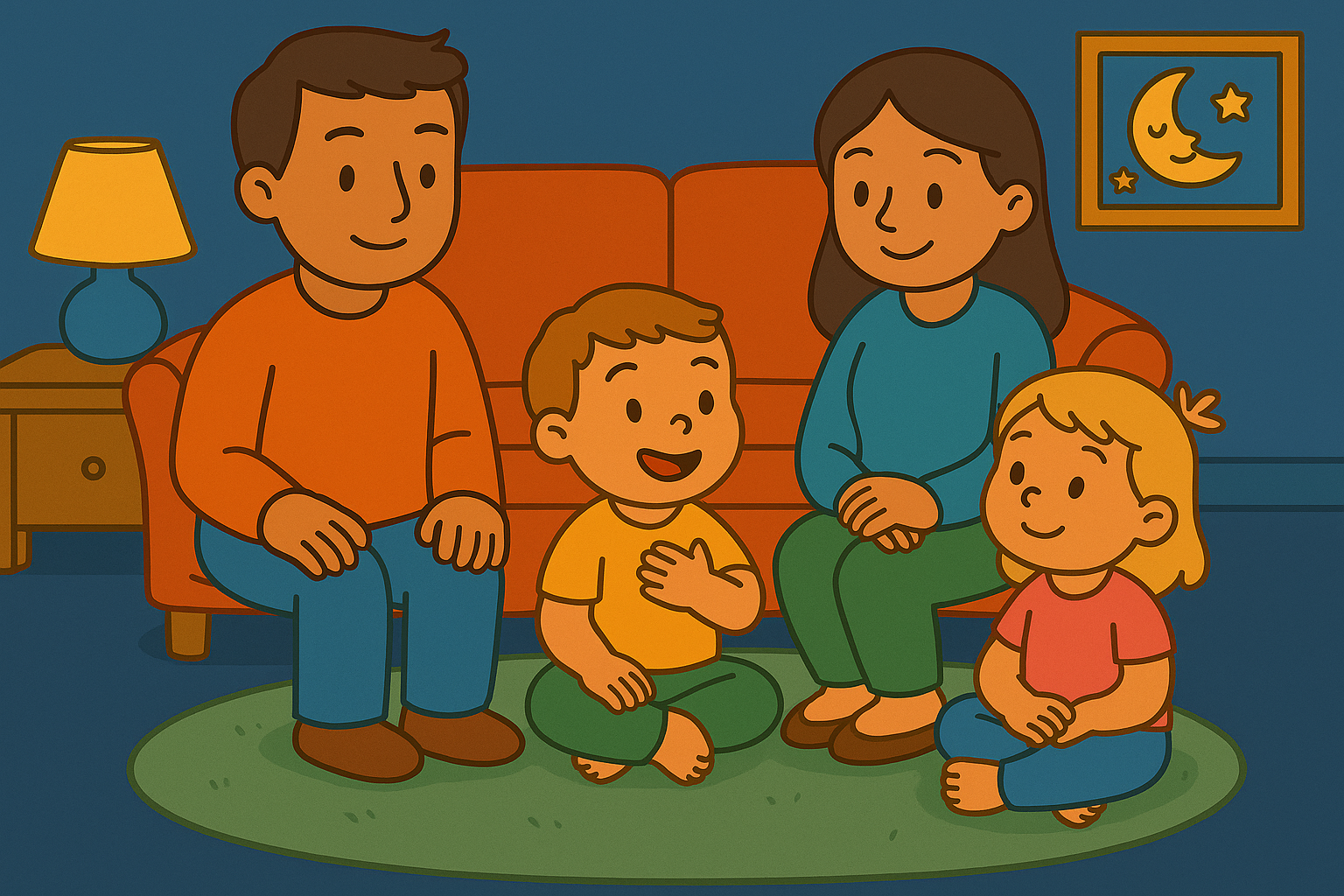Family Reflection Nights: Talking About the Day
Family Reflection Nights: Talking About the Day
Children learn about themselves not only through play and experience — but through reflection. When families pause to discuss the day together, children gain a chance to develop emotional awareness, communication skills, and a sense of belonging. These evening conversations don’t have to be deep or long — they simply need to offer connection, safety, and space to talk.
Family Reflection Nights help children process their day before moving into bedtime. They slow down the nervous system, prepare the mind for rest, and invite genuine conversation. As children grow, these small nightly dialogues become a powerful tool for emotional regulation and self-understanding.
Why Reflection Works for Children
Reflection helps children understand their feelings, recall moments of success, and process challenges. It turns daily experiences into learning opportunities — and gives caregivers insight into what children may need.
Benefits of family reflection:
Encourages emotional expression
Strengthens vocabulary for feelings
Builds secure attachment
Reduces bedtime anxiety
Increases empathy and trust
Helps children recover from hard days
Reflection says: You don’t have to carry the day alone.
Creating a Predictable Time for Reflection
Children process their thoughts more easily when reflection follows a predictable rhythm. Just like How to Create “Anchor Moments” Kids Can Count On, consistency makes reflection safe and familiar.
Helpful timing options:
After dinner
At bedtime or during storytime
Before brushing teeth
While tidying toys
During an evening walk
Reflection doesn’t need a perfect setting — it just needs a repeated one.
Designing a Cozy Reflection Space
A reflection doesn’t need to look like a meeting. The environment should feel comfortable, calm, and welcoming.
You might include:
Pillows or blankets
Low lighting or lamp
Soft background music
Stuffed animals for fidgeting
Weighted lap blanket for sensory comfort
The space should silently communicate: This is a safe place to share.
Simple Ways to Begin the Conversation
Children often need a starting point — an anchor question. Beginning with something specific helps get ideas flowing.
Helpful prompts:
“What made you smile today?”
“What was surprisingly tricky?”
“Did you learn something new?”
“What are you proud of?”
“Did anything feel confusing?”
Just one question can open the door to emotional clarity.
Reflection Tools for Younger Children
Children don’t always express feelings verbally — especially after a busy day. Tools make it easier to reflect through play, movement, or visual prompts.
Reflection tools:
Emotion cards
Drawing or doodling their day
Color chart for feelings
“Good vs. tricky” jar
Puppets or figurines to re-enact moments
“Rose, thorn, seed” sorting activity
These mirror strategies used in Family Journaling: Reflecting on Daily Gratitude, where reflection becomes accessible even for nonverbal children.
Language That Supports Emotional Safety
Children share more when they feel comforted — not examined. Gentle language helps create that emotional comfort.
Supportive phrases:
“I’m glad you told me that.”
“I hear you.”
“That must have felt hard.”
“How can I help tomorrow?”
“Would you like help, space, or just a hug?”
Language turns reflection into connection.
Getting Siblings Involved Without Competition
Siblings may share reflection time, but comparison must be avoided. Each voice deserves equal respect — even if children express differently.
Sibling strategies:
Use a talking object to pass around
Invitation phrases: “Who wants to go first?”
Let one sibling start, another close
Optional sharing — silence is allowed
Ask: “How could we help each other tomorrow?”
This approach echoes themes from Encouraging Siblings to Work Together on Routines, where cooperation replaces rivalry.
Managing Hard Topics Gently
If a child brings up a tough moment from the day, reflect slowly and calmly. Not all problems need solving immediately — many simply need to be heard.
Ways to hold difficult emotions:
Pause and breathe together
Offer validation before advice
Use phrases like “Tell me more”
Ask “Would you like ideas or not yet?”
Revisit the topic later if needed
Reflection isn’t about fixing. It’s about feeling safe enough to share.
Ending With Hope and Comfort
Reflection should end on a note of reassurance — not pressure. The goal is to close the day with calm, not urgency.
Ideas for closure:
Three deep breaths together
Gratitude moment
Quiet hug or chant
“Let’s try again tomorrow.”
One sentence of encouragement
The night should end feeling light, not heavy.
Using Reflection to Prepare for Tomorrow
Reflection isn’t just about looking back — it helps children look forward with clarity and confidence. It offers a healthy bridge into the next day, just like in Teaching Kids to Plan Their Day With You, where co-planning brings readiness and peace.
Questions that prepare:
“What might help you tomorrow?”
“Anything you want to do differently?”
“Should we plan an anchor moment?”
“Do you want a calm reminder in the morning?”
Reflection turns tomorrow into a possibility — not a worry.
Reflection as Lifelong Strength
Over time, reflection nights become something more than routine. They become a form of emotional safety — evidence that home is a place where worries can be released, and joys can be shared.
These moments leave lasting roots. When a child learns to reflect, they learn to navigate emotions with maturity — not by suppressing them, but by letting them breathe.
This content is for educational purposes and is not a substitute for professional medical or psychological advice.
Popular Parenting Articles


